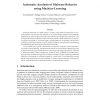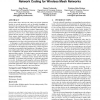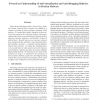595 search results - page 2 / 119 » Malware Defense Using Network Security Authentication |
ACSAC
2010
IEEE
13 years 2 months ago
2010
IEEE
Conficker [26] is the most recent widespread, well-known worm/bot. According to several reports [16, 28], it has infected about 7 million to 15 million hosts and the victims are s...
JCS
2011
12 years 7 months ago
2011
Malicious software—so called malware—poses a major threat to the security of computer systems. The amount and diversity of its variants render classic security defenses ineffe...
WISEC
2009
ACM
2009
ACM
Practical defenses against pollution attacks in intra-flow network coding for wireless mesh networks
13 years 11 months ago
Recent studies show that network coding can provide significant benefits to network protocols, such as increased throughput, reduced network congestion, higher reliability, and ...
SP
2008
IEEE
13 years 10 months ago
2008
IEEE
Unlike today’s reactive approaches, information flow based approaches can provide positive assurances about overall system integrity, and hence can defend against sophisticated...
DSN
2008
IEEE
13 years 10 months ago
2008
IEEE
Many threats that plague today’s networks (e.g., phishing, botnets, denial of service attacks) are enabled by a complex ecosystem of attack programs commonly called malware. To ...



